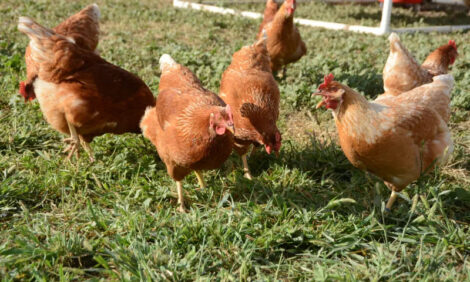



Phytogenics – New Benefits of a Proven Approach
An introduction to phytogenic feed additives by Dr Tobias Steiner (Director Competence Center Phytogenics) and Dr Ahmed Aufy (Product Manager) with Biomin Holdings GmbH.Understanding Phytogenics
Phytogenics exert pronounced flavoring properties, hence having an
impact on the palatability of commercial diets. Moreover, their secondary
metabolites, such as bitter or pungent substances, saponins, essential
oils, alkaloids or flavonoids, are considered the plants’ secrets
holders. The effects and economic impact of PFAs under commercial conditions, where consistent improvements in feed intake,
growth rate and feed conversion were reported, confirm positive
results from an ever growing number of scientific publications.
In fact, the effectiveness of plant active ingredients has often
been underestimated in recent years and not seldom their mode
of action is misunderstood even by companies offering such
products. It is often postulated that PFAs are antimicrobial. In
deed many secondary plant ingredients and extracts do have
such properties. The in vitro antimicrobial activity of plant active
ingredients is well documented through scientific findings
and plants themselves can respond to bacterial or viral attack
for example by producing 'phytoalexins'. However, it would
be inappropriate to limit the value of phytogenic substances to
an antimicrobial effect only. The complexity of plant secondary
metabolites has far more to offer: Stimulation of saliva and
gastric juices, support of liver function, anti-inflammatory and
anti-oxidant effects are among those properties that are highly
important for in vivo efficacy of PFAs, as recent research
shows.
Formulating Phytogenic Feed Additives
The fine art of formulating PFAs lies in a suitable combination of the right plant materials. This requires a deep understanding of the flavoring properties, as well as the biological effects of plant compounds in the animal organism. Only the combination of different plant materials, including, for example, herbs and spices in complete and finely ground form, essential oils and nonvolatile extracts allows for making use of the full potential that plants offer. An interaction of all constituents working harmoniously together makes a well-formulated PFA more potent than the sum of its individual parts. In this context, PFAs must be clearly distinguished from products based solely on nature-identical compounds.
The Importance of Flavour
A very important property of PFAs is their influence on feed flavor, particularly in young animals. Perception of flavor is a complex physiological response. It is a combination of taste, which stimulates receptors in the mouth, and odour or aroma, which stimulates receptors in the nasal cavity. To be perceived as aroma, molecules must be volatile but both volatile and non-volatile molecules may have a taste. There are several types of flavor which can be added to feed to enhance or mask the natural flavor characteristics of feed and thus improve palatability. However, there are differences between animal species. The susceptibility to taste, for example, differs depending on the number of taste buds (Table 1).
| Susceptibility of different animals to taste | |
|---|---|
| Animal | No. of taste buds |
| Chicken | 24 |
| Bat | 800 |
| Dog | 1,700 |
| Human | 9,000 |
| Pig | 15,000 |
| Goat | 15,000 |
| Rabbit | 17,000 |
| Cattle | 25,000 |
| Catfish | 100,000 |
Versatile Mode of Action
Phytogenic compounds have a versatile mode of action, which had been a big myth for those who used these substances as additives in animal feed. Therefore, a major objective of research and development in the last few years was to understand the role of PFAs in improving animal performance (Hippenstiehl et al., 2011; Windisch et al., 2008). However, the vast number of phytogenic compounds and the differences in composition of PFAs makes it impossible to postulate a general mode of action that is applicable to all commercial PFAs in the market.
Improving Digestibility – Optimizing Efficiency
Recently, more scientific data was generated, which enables us to put the right blocks together and understand better how our phytogenic additives contribute to productivity in animal production. An improvement in digestibility is a main effect ultimately leading to better growth performance and feed efficiency. Such improvements were reported for proximate nutrients and amino acids in pigs (Maenner et al., 2011; Figure 1) and poultry (Mountzouris et al., 2011).

Improved digestibility is a consequence of different effects:
- stimulated gastric and intestinal secretions
- optimisation of the intestinal microbiota
- reduction of microbial toxic metabolites in the intestine
- relief from immune stress, including a reduction in sub-clinical intestinal inflammation processes
Phytogenics Inhibit Cellular Inflammation
Recent scientific work points out that a potent anti-inflammatory
efficacy plays a major role in the mode of action of
Digestarom. Experts in livestock production are aware of the
importance of controlling subclinical intestinal inflammation
processes in the herd or flock because of the losses that occur
due to this incidence. As such, anti-inflammatory effects of
Digestarom can largely contribute to animal performance. In
order to understand how Digestarom exerts its anti-inflammatory
effect, we had to dig very deeply at sub-cellular level to
elucidate the exact mechanisms involved.
In an experiment
carried out at the University of Giessen (Germany), the anti-inflammatory
activity of Digestarom was examined in a test
model with inflammation-induced intestinal cells. The inflammation
was induced by treating the cells with tumor necrosis
factor a (TNFa). These cells were incubated or not with an
extract of Digestarom. The first element to study was the nuclear
factor kB (NF-kB). This is a protein complex and a very
important transcriptional factor that controls the expression
of different genes [interleukin 8 (IL-8), intracellular adhesion
molecule (ICAM-1) and monocyte chemotactic protein (MCT-
1)] that are involved in the regulation of the pro-inflammatory
response. The experiment revealed excellent inhibitory effects
of Digestarom on IL-8, ICAM-1 and MCT-1 (Figure 2). Thus,
Digestarom exerted a highly positive effect on the cellular
inflammatory status by down regulation of NF-kB.

*Significant difference vs. induced inflammation (Control + TNF a) (P<0.05)
Another very important cellular element is the transcription factor Nrf-2, which is responsible for anti-oxidative activity. Activation of the Nrf-2 pathway leads to the induction of genes responsible for cellular defense against reactive oxygen species and detoxification of xenobiotics. Nrf-2 is located in the cytoplasm in a protein complex. Digestarom was found to up-regulate Nrf-2 target genes, i.e. cytochrome P450 isoform1A1 (CYP1A1), heme oxygenase-1 (HO-1) and UDP glucurono-syltransferase isoform 1A1 (UGT1A1) (Figure 3).

*Significant difference vs. control (P<0.05)
Regular supplementation of Digestarom in the diet acts as a
prophylactic against inflammatory reactions in the gastrointestinal
tract by inhibiting the NF-kB factor and stimulating the
anti-oxidative factor Nrf-2. This activity interrupts the damaging
circle of the release of inflammatory mediators that otherwise
would provoke intensive inflammation and the resulting
necrosis and performance depression (Syed, 2011).
September 2012








